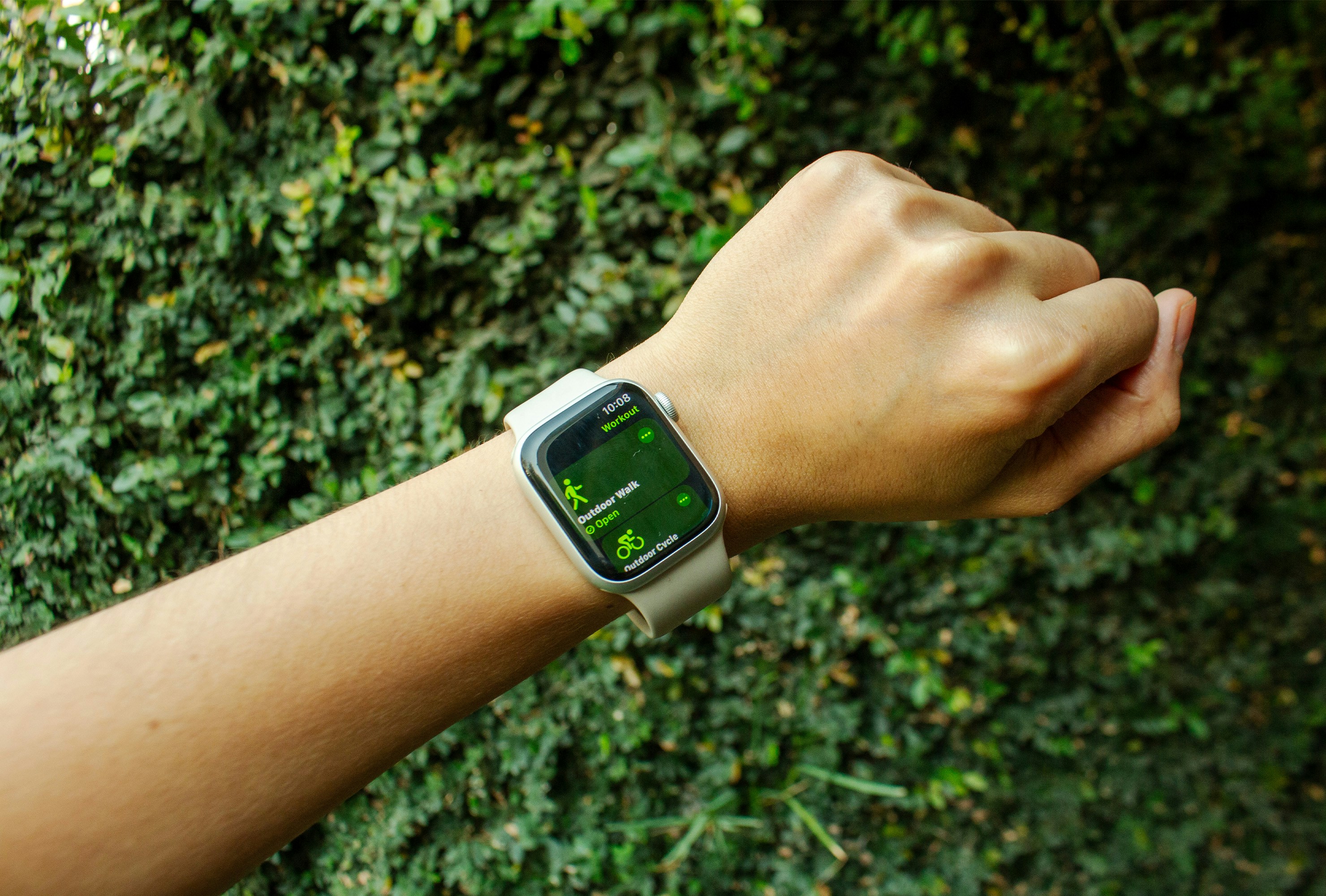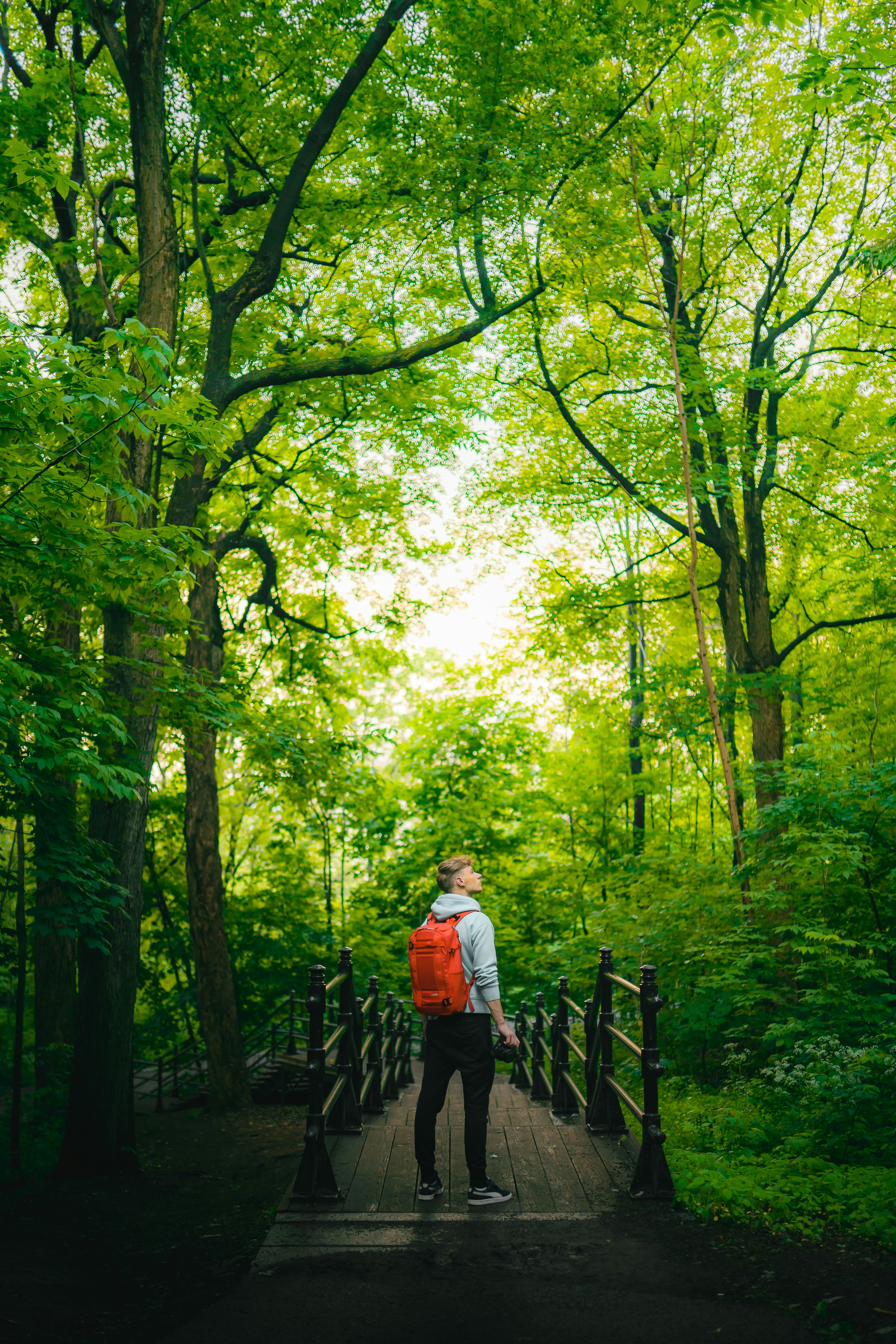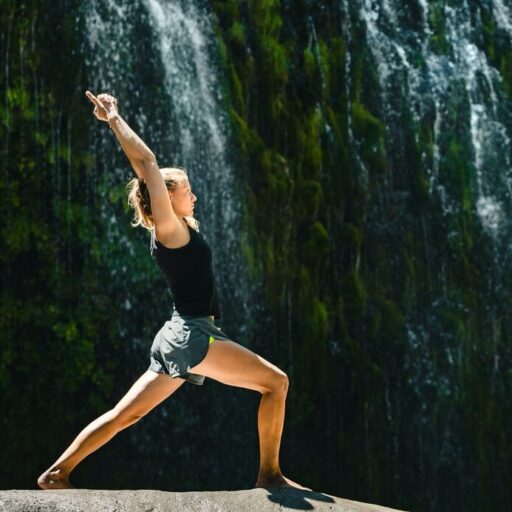Support our educational content for free when you purchase through links on our site. Learn more
What Is Meant by Green Exercise? 🌿 11 Ways Nature Boosts Your Workout (2025)

Imagine stepping outside, breathing in crisp, fresh air, and feeling your stress melt away as you move your body—without ever setting foot in a gym. That’s the magic of green exercise: combining physical activity with the healing power of nature. But what exactly counts as green exercise? Is it just a fancy term for walking in the park, or is there more to this nature-powered fitness trend?
In this article, we unravel the full story behind green exercise, exploring 11 diverse activities that qualify, the science-backed benefits for your mind and body, and expert tips on how to seamlessly integrate green workouts into your busy life. Plus, we’ll share insider advice on gear, safety, and overcoming common hurdles—so you can confidently embark on your own green fitness journey.
Ready to discover how nature can transform your exercise routine and wellbeing? Keep reading to unlock the secrets of green exercise and find your perfect outdoor workout match!
Key Takeaways
- Green exercise combines physical activity with exposure to natural environments, amplifying benefits for mental and physical health.
- It includes a wide range of activities—from walking and cycling to forest bathing and gardening—making it accessible for all fitness levels.
- Scientific studies show green exercise reduces stress hormones, improves mood, enhances cognitive function, and boosts overall wellbeing.
- Overcoming barriers like time constraints and access to green spaces is possible with practical strategies and creative thinking.
- Investing in quality outdoor gear like Merrell hiking shoes or Hydro Flask water bottles can enhance your comfort and safety.
- Explore our recommended gear and resources to start your green exercise journey with confidence and style.
👉 Shop Essential Green Exercise Gear:
- Merrell Hiking Shoes on Amazon | Merrell Official Website
- Hydro Flask Water Bottles on Amazon | Hydro Flask Official Website
- Garmin GPS Watches on Amazon | Garmin Official Website
Table of Contents
- ⚡️ Quick Tips and Facts: Your Green Exercise Cheat Sheet
- 🌳 Unearthing the Roots: The Genesis and Evolution of Green Exercise
- 🌿 What Exactly Is Green Exercise? Defining Nature’s Workout
- 🧠💪 The Mind-Body Symphony: Unpacking the Myriad Benefits of Green Exercise
- 🔬 The Science Behind the Serenity: What Research Says About Green Exercise
- 🚶♀️🚴♂️🚣♀️ What Activities Qualify as Green Exercise? Your Outdoor Playbook
- 1. Walking, Hiking, and Trail Running
- 2. Cycling and Mountain Biking
- 3. Water Sports: Kayaking, SUP, and Wild Swimming
- 4. Outdoor Yoga and Tai Chi
- 5. Gardening and Allotment Work
- 6. Outdoor Team Sports and Group Activities
- 7. Forest Bathing (Shinrin-Yoku): The Art of Mindful Immersion
- 8. Rock Climbing and Bouldering
- 9. Horseback Riding
- 10. Snow Sports: Skiing, Snowshoeing
- 11. Parkour and Urban Exploration (Green Spaces)
- 🗺️ Finding Your Green Oasis: Where to Practice Green Exercise
- 🎒 Gearing Up for Green: Essential Equipment and Apparel
- 🚦 Navigating the Wild: Safety Tips and Best Practices for Outdoor Workouts
- 🌍 Your Footprint in the Forest: The Environmental Impact of Green Exercise
- 🚧 Overcoming Obstacles: Tackling Common Barriers to Green Exercise
- 💡 Integrating Green Exercise into Your Daily Life: Practical Strategies
- 🏋️♀️ Green Exercise vs. Gym Workouts: A Head-to-Head Comparison
- 🚀 The Future of Fitness: Trends and Innovations in Green Exercise
- ✅ Our Expert Recommendations: Your Path to a Greener, Healthier You
- ✨ Conclusion: Embrace the Green Revolution!
- 🔗 Recommended Links: Dive Deeper into Nature’s Wisdom
- ❓ FAQ: Your Burning Questions About Green Exercise Answered
- 📚 Reference Links: The Science That Backs Our Claims
Quick Tips and Facts: Your Green Exercise Cheat Sheet
To get started with green exercise, it’s essential to understand how nature affects physical activity. Here are some key points to consider:
- Green exercise combines physical activity with exposure to nature, providing numerous health benefits.
- It can be as simple as walking in a park or as intense as hiking in the wilderness.
- Regular green exercise can improve mental health, reduce stress, and boost mood.
- Aim for at least 30 minutes of moderate-intensity green exercise per day.
- Find a green space near you, such as a local park or trail, and get moving.
Benefits of Green Exercise
Some of the benefits of green exercise include:
- Improved mental health and mood
- Reduced stress and anxiety
- Increased physical activity and fitness
- Enhanced cognitive function and creativity
- Better sleep quality
Getting Started with Green Exercise
To get started with green exercise, consider the following tips:
- Find a green space near you, such as a local park or trail.
- Start with short, manageable sessions and gradually increase duration and intensity.
- Invite friends or family to join you for added motivation and social benefits.
- Experiment with different types of green exercise, such as walking, hiking, or cycling.
- Make green exercise a regular part of your routine, aiming for at least 30 minutes per day.
Unearthing the Roots: The Genesis and Evolution of Green Exercise
The concept of green exercise has been around for decades, but it wasn’t until the early 2000s that it gained significant attention. According to a study published in the Journal of Environmental Psychology, green exercise can have a positive impact on both physical and mental health.
The Early Days of Green Exercise
In the early days of green exercise, researchers focused on the physical health benefits of outdoor activity. However, as the field evolved, the importance of mental health and well-being became increasingly clear. A study published in the Journal of Affective Disorders found that green exercise can reduce symptoms of anxiety and depression.
The Role of Nature in Green Exercise
Nature plays a critical role in green exercise, providing a unique and dynamic environment that can enhance physical activity and mental well-being. According to a study published in the Journal of Environmental Psychology, natural environments can reduce stress levels and improve mood.
What Exactly Is Green Exercise? Defining Nature’s Workout
Green exercise is a type of physical activity that takes place in a natural environment, such as a park, trail, or beach. It can be as simple as walking or as intense as hiking or cycling. The key characteristic of green exercise is that it combines physical activity with exposure to nature.
More Than Just a Walk in the Park: Key Characteristics
Some key characteristics of green exercise include:
- Physical activity: Green exercise involves some form of physical activity, such as walking, running, or cycling.
- Natural environment: Green exercise takes place in a natural environment, such as a park, trail, or beach.
- Exposure to nature: Green exercise involves exposure to natural elements, such as sunlight, fresh air, and vegetation.
The Spectrum of Green: From Gentle Strolls to Wild Adventures
Green exercise can range from gentle strolls to more intense activities like hiking or cycling. The type and intensity of green exercise will depend on individual preferences and fitness levels.
The Mind-Body Symphony: Unpacking the Myriad Benefits of Green Exercise
Green exercise has numerous benefits for both physical and mental health. Some of the benefits include:
- Improved mental health and mood
- Reduced stress and anxiety
- Increased physical activity and fitness
- Enhanced cognitive function and creativity
- Better sleep quality
Physical Fitness: Beyond the Treadmill
Green exercise can provide a unique and dynamic environment for physical activity, enhancing fitness and overall health. According to a study published in the Journal of Sports Sciences, green exercise can improve cardiovascular health and reduce the risk of chronic diseases.
Mental Wellness: Nature’s Antidepressant
Green exercise has been shown to have a positive impact on mental health, reducing symptoms of anxiety and depression. A study published in the Journal of Affective Disorders found that green exercise can improve mood and reduce stress levels.
Emotional Resilience: Finding Calm in the Wild
Green exercise can provide a sense of calm and well-being, enhancing emotional resilience and overall mental health. According to a study published in the Journal of Environmental Psychology, natural environments can reduce stress levels and improve mood.
Social Connection: Building Bonds Outdoors
Green exercise can provide opportunities for social connection and community building, enhancing overall well-being. A study published in the Journal of Social and Clinical Psychology found that green exercise can improve social connections and reduce feelings of loneliness.
Spiritual Rejuvenation: Connecting with Something Bigger
Green exercise can provide a sense of spiritual connection and rejuvenation, enhancing overall well-being and life satisfaction. According to a study published in the Journal of Positive Psychology, green exercise can improve spiritual well-being and life satisfaction.
The Science Behind the Serenity: What Research Says About Green Exercise
Numerous studies have investigated the benefits of green exercise, providing insights into its effects on physical and mental health. According to a study published in the Journal of Environmental Psychology, green exercise can reduce stress levels and improve mood.
Dose-Response: How Much Green Do You Need?
The amount of green exercise needed to achieve benefits can vary depending on individual preferences and fitness levels. However, even short periods of green exercise can have a positive impact on mental and physical health.
Biophilia Hypothesis: Our Innate Connection to Nature
The biophilia hypothesis suggests that humans have an innate connection to nature, which can enhance overall well-being and life satisfaction. According to a study published in the Journal of Environmental Psychology, natural environments can reduce stress levels and improve mood.
Cortisol Levels and Stress Reduction: The Green Prescription
Green exercise has been shown to reduce cortisol levels and stress, providing a natural and effective way to manage stress and anxiety. A study published in the Journal of Clinical Endocrinology and Metabolism found that green exercise can reduce cortisol levels and improve mood.
What Activities Qualify as Green Exercise? Your Outdoor Playbook
Green exercise can involve a wide range of activities, from walking and hiking to cycling and swimming. Some examples of green exercise include:
- Walking and hiking
- Cycling and mountain biking
- Swimming and kayaking
- Outdoor yoga and tai chi
- Gardening and allotment work
- Outdoor team sports and group activities
- Forest bathing and nature walking
- Rock climbing and bouldering
- Horseback riding
- Snow sports and winter activities
Finding the Right Activity for You
The right green exercise activity will depend on individual preferences and fitness levels. Consider trying out different activities to find what works best for you.
Finding Your Green Oasis: Where to Practice Green Exercise
Green exercise can take place in a variety of natural environments, from local parks and trails to beaches and mountains. Some examples of green spaces include:
- Local parks and urban green spaces
- National parks and wilderness areas
- Community gardens and allotments
- Coastal paths and beaches
- Your own backyard or garden
Discovering New Green Spaces
Consider exploring new green spaces in your area, such as local parks or trails. You can also try searching online for green spaces near you.
Gearing Up for Green: Essential Equipment and Apparel
While green exercise can be done with minimal equipment, some essential items can enhance your experience. Some examples of essential equipment and apparel include:
- Comfortable clothing and footwear
- Water bottle or hydration pack
- Sunscreen and insect repellent
- First aid kit and emergency supplies
- Map and compass or GPS device
Choosing the Right Gear for Your Activity
The right gear will depend on the specific activity and environment. Consider researching the best gear for your chosen activity.
Navigating the Wild: Safety Tips and Best Practices for Outdoor Workouts
While green exercise can be a safe and enjoyable activity, it’s essential to take some basic safety precautions. Some examples of safety tips and best practices include:
- Checking the weather forecast before heading out
- Telling someone where you’re going and when you plan to return
- Bringing essential equipment and supplies
- Being aware of your surroundings and potential hazards
- Following local regulations and guidelines
Staying Safe in the Great Outdoors
Consider taking a safety course or workshop to learn more about outdoor safety and best practices.
Your Footprint in the Forest: The Environmental Impact of Green Exercise
While green exercise can have numerous benefits for human health, it’s essential to consider the potential environmental impact. Some examples of environmental considerations include:
- Leaving no trace and minimizing waste
- Respecting local wildlife and habitats
- Following local regulations and guidelines
- Supporting conservation efforts and sustainable practices
- Being mindful of your carbon footprint and transportation choices
Reducing Your Environmental Impact
Consider making a few simple changes to reduce your environmental impact, such as using public transportation or carpooling to green spaces.
Overcoming Obstacles: Tackling Common Barriers to Green Exercise
While green exercise can be a enjoyable and rewarding activity, some common barriers can prevent people from getting started. Some examples of common barriers include:
- Lack of time or motivation
- Limited access to green spaces
- Safety concerns or fears
- Physical or health limitations
- Cost or equipment concerns
Finding Solutions to Common Barriers
Consider seeking out local resources or support groups to help overcome common barriers to green exercise.
Integrating Green Exercise into Your Daily Life: Practical Strategies
Green exercise can be a fun and rewarding way to improve physical and mental health. Some examples of practical strategies for integrating green exercise into your daily life include:
- Scheduling green exercise into your daily routine
- Finding a workout buddy or accountability partner
- Trying out new activities or green spaces
- Incorporating green exercise into your commute or daily activities
- Making green exercise a family or social activity
Making Green Exercise a Habit
Consider starting small and gradually increasing your green exercise routine to make it a sustainable and enjoyable part of your daily life.
Green Exercise vs. Gym Workouts: A Head-to-Head Comparison
While both green exercise and gym workouts can be effective for improving physical and mental health, there are some key differences between the two. Some examples of differences include:
- Cost and accessibility
- Variety and novelty
- Social and community aspects
- Environmental and scenic benefits
- Physical and mental health benefits
Choosing the Best Option for You
Consider weighing the pros and cons of green exercise and gym workouts to determine which option is best for your individual needs and preferences.
The Future of Fitness: Trends and Innovations in Green Exercise
The future of fitness is likely to involve a greater emphasis on green exercise and outdoor activities. Some examples of trends and innovations include:
- Increased accessibility and affordability of green spaces
- Development of new and innovative outdoor fitness equipment
- Growing popularity of outdoor group fitness classes and workshops
- Integration of technology and social media into green exercise
- Greater emphasis on sustainability and environmental awareness in fitness and exercise
Staying Ahead of the Curve
Consider staying up-to-date with the latest trends and innovations in green exercise to stay motivated and inspired.
Our Expert Recommendations: Your Path to a Greener, Healthier You
At Fitness and Nature, we recommend incorporating green exercise into your daily routine for improved physical and mental health. Some examples of expert recommendations include:
- Starting small and gradually increasing your green exercise routine
- Finding a workout buddy or accountability partner
- Trying out new activities or green spaces
- Incorporating green exercise into your commute or daily activities
- Making green exercise a family or social activity
Taking the First Step
Consider taking the first step towards a greener, healthier you by trying out a new green exercise activity or routine today.
Conclusion: Embrace the Green Revolution!

After our deep dive into the world of green exercise, it’s clear that this isn’t just a trendy buzzword — it’s a powerful, holistic approach to fitness that harmonizes body, mind, and nature. From boosting your mood and lowering stress hormones to improving cardiovascular health and fostering social connections, green exercise offers a win-win for your well-being and the planet.
Remember that green exercise is incredibly versatile — whether you’re taking a brisk walk in your local park, practicing yoga under the trees, or embarking on a wild mountain bike trail, you’re tapping into nature’s healing power. The science backs it up: even short bouts of green exercise can yield significant benefits, especially when done regularly.
We addressed the common barriers — lack of time, access, or motivation — and shared practical strategies to overcome them. So if you’ve ever wondered, “Can I really fit green exercise into my busy life?” the answer is a resounding yes! Start small, find your favorite green spot, and let nature be your gym.
At Fitness and Nature™, we confidently recommend integrating green exercise into your routine as a sustainable, enjoyable, and effective way to boost your health. It’s not just exercise; it’s a lifestyle upgrade that reconnects you with the natural world and yourself.
Ready to step outside and feel the difference? Your green journey awaits! 🌿✨
Recommended Links: Dive Deeper and Gear Up for Green Exercise
👉 Shop Essential Green Exercise Gear:
- Merrell Hiking Shoes: Amazon | Merrell Official Website
- Hydro Flask Water Bottles: Amazon | Hydro Flask Official Website
- L.L.Bean Outdoor Apparel: Amazon | L.L.Bean Official Website
- Garmin GPS Watches: Amazon | Garmin Official Website
Books to Inspire Your Green Exercise Journey:
- “Your Brain on Nature: The Science of Nature’s Influence on Your Health, Happiness and Vitality” by Eva M. Selhub, MD & Alan C. Logan, ND — Amazon
- “Forest Bathing: How Trees Can Help You Find Health and Happiness” by Dr. Qing Li — Amazon
- “The Nature Fix: Why Nature Makes Us Happier, Healthier, and More Creative” by Florence Williams — Amazon
FAQ: Your Burning Questions About Green Exercise Answered

What are the benefits of exercising outdoors in nature?
Exercising outdoors in natural settings combines the physical benefits of exercise with the psychological advantages of nature exposure. This synergy leads to:
- Reduced stress and cortisol levels: Nature’s calming effect lowers stress hormones, helping you feel more relaxed.
- Improved mood and self-esteem: Studies show green exercise boosts mood and reduces symptoms of anxiety and depression.
- Enhanced cognitive function: Natural environments help restore attention and improve creativity.
- Better physical health: Outdoor exercise often involves varied terrain, improving balance, coordination, and cardiovascular fitness.
- Social and spiritual benefits: Being outdoors encourages social interaction and a sense of connection to something bigger than ourselves.
Read more about “How Do You Describe Fitness? 10 Essential Components Explained 🌟 (2025)”
How does green exercise impact mental health and wellbeing?
Green exercise acts as a natural antidepressant and anxiolytic. Exposure to green spaces during exercise has been shown to:
- Lower negative mood states such as tension, anger, and fatigue.
- Increase feelings of revitalization and engagement.
- Restore attention and reduce mental fatigue, according to Attention Restoration Theory.
- Reduce physiological markers of stress like heart rate and blood pressure.
- Enhance resilience by providing a peaceful environment that fosters mindfulness and emotional regulation.
Read more about “8 Ways Nature Therapy & Seaside Recreation Boost Wellness 🌊 (2025)”
Can green exercise be adapted for people with disabilities or mobility issues?
Absolutely! Green exercise is highly adaptable:
- Accessible parks and trails: Many urban parks now feature paved or smooth paths suitable for wheelchairs and mobility aids.
- Gardening and horticultural therapy: These activities provide gentle physical activity and connection to nature.
- Adaptive outdoor sports: Organizations offer kayaking, horseback riding, and cycling programs tailored for people with disabilities.
- Seated yoga or tai chi in green spaces: These low-impact exercises can be done outdoors with minimal equipment.
The key is to find or create inclusive environments and activities that match individual abilities and preferences.
What are some examples of green exercise activities that can be done in urban areas?
Urban environments offer plenty of opportunities for green exercise, including:
- Walking or jogging in city parks and greenways.
- Outdoor yoga classes in community gardens or rooftop green spaces.
- Cycling on bike-friendly urban trails.
- Gardening in community allotments or balcony gardens.
- Participating in “green gyms” or volunteer conservation projects.
- Urban forest bathing: Mindful walks through tree-lined streets or small urban woodlands.
These activities make green exercise accessible even if you live in a bustling city.
Read more about “12 Green Exercise Examples to Boost Your Well-being 🌿”
How do wearable fitness trackers measure green exercise, and what should I know?
Wearable devices like the Apple Watch credit exercise minutes based on intensity thresholds roughly equivalent to a brisk walk. However, factors such as arm movement, heart rate, and GPS data influence tracking accuracy. For example, pushing a stroller or walking without natural arm swings may reduce credited exercise minutes. Calibration and selecting the right workout mode can improve accuracy. For more details, see the Apple Community discussion on exercise credit.
Reference Links: The Science That Backs Our Claims
- Pretty J, Peacock J, Sellens M, Griffin M. The mental and physical health outcomes of green exercise. Int J Environ Health Res. 2005;15(5):319-337. PMC Article
- Green exercise. Wikipedia. Link
- Apple Community: What counts as “exercise” for the green ring? Link
- Natural England: Green Exercise Initiatives. Link
- Forest Bathing Benefits on Fitness and Nature™. Link
- How Does Nature Affect Physical Activity? Discover 10 Surprising Benefits! 🌳 Link
- Garmin Official Website. Link
- Merrell Official Website. Link
- Hydro Flask Official Website. Link
- L.L.Bean Official Website. Link
Ready to lace up your shoes and breathe in that fresh forest air? Your green exercise adventure starts now! 🌿💪




